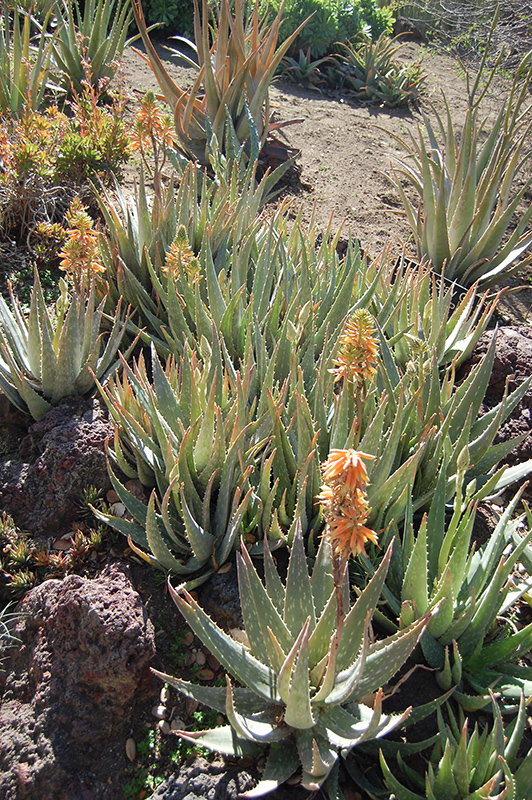Johnson’s Hybrid Aloe
Description
A small clumping selection with short stems, bearing narrow, arching, bright green leaves with white spots and tiny white teeth; erect, branching racemes of tubular orange flowers nearly year-round; a wonderful garden or container accent
Landscape Attributes
Johnson's Hybrid Aloe is an herbaceous evergreen perennial with a shapely form and gracefully arching foliage. Its wonderfully bold, coarse texture can be very effective in a balanced garden composition.
Johnson's Hybrid Aloe is recommended for the following landscape applications;
Planting & Growing
Johnson's Hybrid Aloe will grow to be about 12 inches tall at maturity, with a spread of 24 inches. It grows at a slow rate, and under ideal conditions can be expected to live for 40 years or more. As an evegreen perennial, this plant will typically keep its form and foliage year-round.
This plant does best in full sun to partial shade. It prefers dry to average moisture levels with very well-drained soil, and will often die in standing water. It is considered to be drought-tolerant, and thus makes an ideal choice for a low-water garden or xeriscape application. It is not particular as to soil pH, but grows best in sandy soils. It is somewhat tolerant of urban pollution. This particular variety is an interspecific hybrid. It can be propagated by division; however, as a cultivated variety, be aware that it may be subject to certain restrictions or prohibitions on propagation.
Johnson's Hybrid Aloe is a fine choice for the garden, but it is also a good selection for planting in outdoor pots and containers. It is often used as a 'filler' in the 'spiller-thriller-filler' container combination, providing a mass of flowers and foliage against which the thriller plants stand out. Note that when growing plants in outdoor containers and baskets, they may require more frequent waterings than they would in the yard or garden. Be aware that in our climate, this plant may be too tender to survive the winter if left outdoors in a container. Contact our experts for more information on how to protect it over the winter months.

